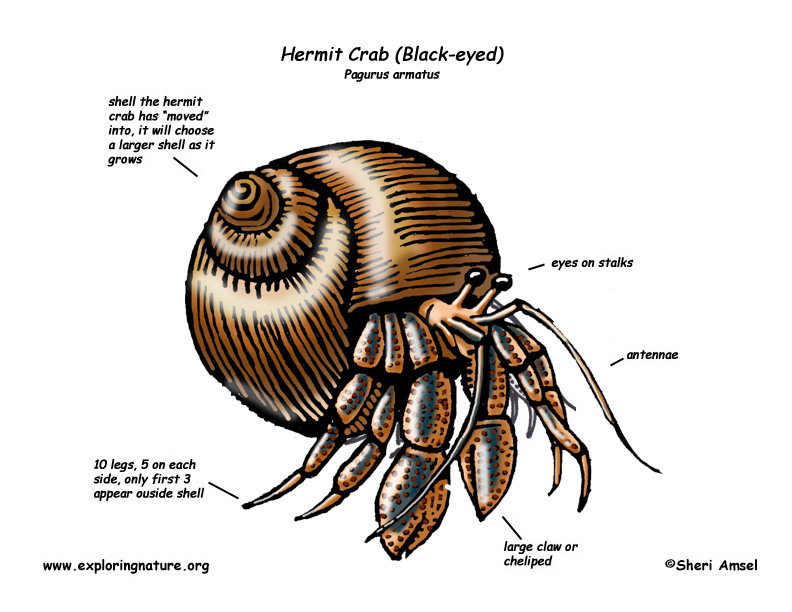

They are found from Alaska to California.
They live in the tidal zone off the shoreline.
They are one of the largest hermit crabs. They have large, oval, black eyes that stand up on stalks. The top of their claws are covered with spines. The legs and claws have red bands.
As they grow, hermit crabs abandon their shell and move into a larger one.
They will eat anything they can find (scavengers), including: worms, small sea creatures (invertebrates) and dead animals and plants.
Females carry eggs in a mass on their belly (abdomen) inside their protective shell. When the larvae hatch, they swim off to hide, feed and grow. As they grow, they shed (molt) their outer layer. Finally they will settle on the seabed as a young crab.
Kingdom: Animalia
Phylum: Arthropoda
Subphylum: Crustacea
Class: Malacostraca
Order: Decapoda
Superfamily: Paguroidea
Family: Paguridae
Genus: Pagurus
Species: P. armatus
When you research information you must cite the reference. Citing for websites is different from citing from books, magazines and periodicals. The style of citing shown here is from the MLA Style Citations (Modern Language Association).
When citing a WEBSITE the general format is as follows.
Author Last Name, First Name(s). "Title: Subtitle of Part of Web Page, if appropriate." Title: Subtitle: Section of Page if appropriate. Sponsoring/Publishing Agency, If Given. Additional significant descriptive information. Date of Electronic Publication or other Date, such as Last Updated. Day Month Year of access < URL >.
Amsel, Sheri. "Hermit Crab (Black-eyed)" Exploring Nature Educational Resource ©2005-2024. December 13, 2024
< http://www.exploringnature.org/db/view/Hermit-Crab-Black-eyed >

